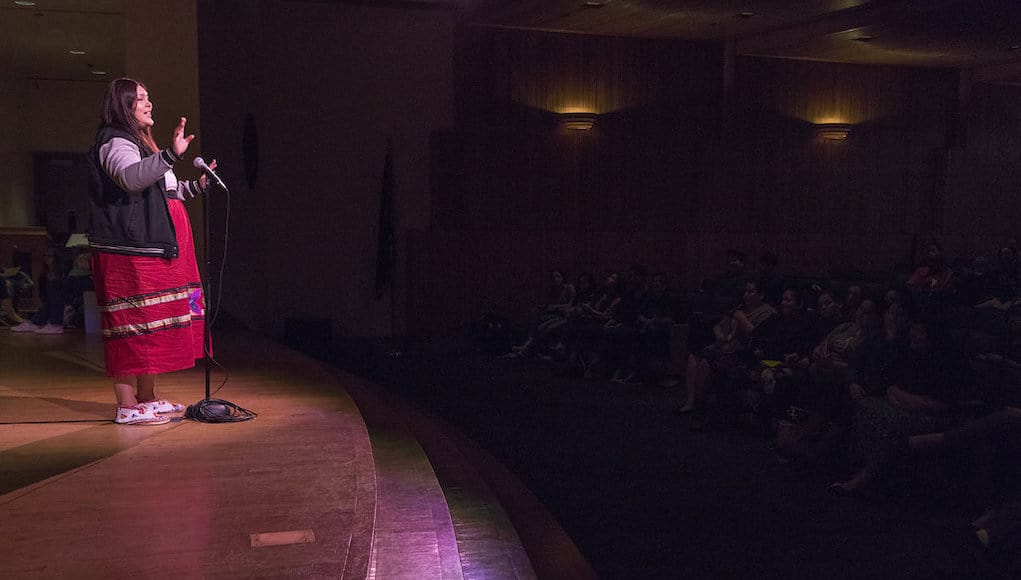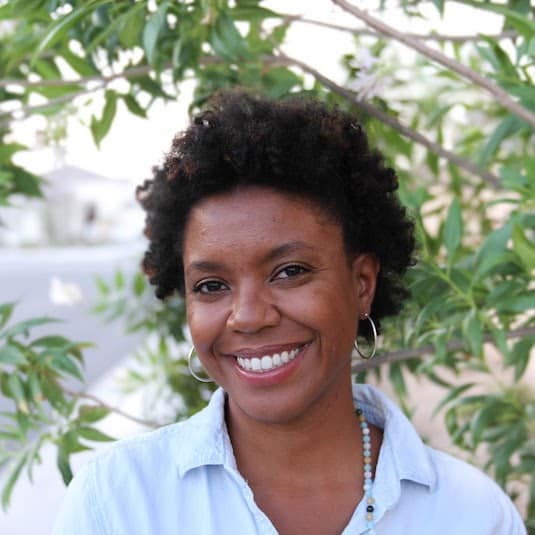How a Community Organization is Helping Students Find and Share Their Voice

This is part two of a four-part series about how student engagement increases when students share their learning.
We have been exploring how authentic public presentations of learning may lead to increased student engagement and why a campaign called Share Your Learning has been advocating for more teachers, schools, districts, and organizations to commit to sharing student learning. In our last feature, we learned how an elementary school teacher is using student-led conferences to empower her students. We encourage all schools and teachers to commit to making student learning public, but organizations can also play a vital role in helping students share. Many schools and districts across the country are partnering with community organizations to bring their knowledge and expertise into the classroom. We invite you to explore your local community to see if there are organizations that can help you encourage your students to share. Even if organizations like the one mentioned in this post don’t exist in your area, consider inviting community members to your students’ learning presentations.
A Community Role in Student Sharing
Communities can play an active role in promoting student’s sharing their learning, whether it’s by attending exhibition nights, participating in presentations of learning, or even developing in-classroom activities aimed towards getting students to share, there are many avenues an organization can take. Share Your Learning invites organizations to partner in the campaign to help promote the importance of students sharing their learning. Story Works Alaska is new to the Share Your Learning campaign, but they are not new to working with educators in Alaska to increase the number of students publically sharing their stories.
The mission of Story Works Alaska is to “help youth develop skills, resilience, and engagement as they explore and share their own stories. The organization believes in the importance of listening, the protective value of connection, and the power of stories to foster resilience.” There are several programs Story Works offers schools, free of charge, in Anchorage and Unalakleet, but the Story Workshops are how they are working to actively encourage students to share their learning–specifically their personal stories. The workshops bring “volunteer story coaches (professionals from the community and project alums from within the school) into high school English classrooms to encourage and support student storytellers.”
The Communities
Story Works Alaska currently works in two Alaskan locations: Anchorage and Unalakleet. Anchorage is home to Alaska’s largest city, with close to 300,000 residents, and among the population there is growing energy around storytelling. The city has an event called Arctic Entries, where adults in the community can “tell a seven-minute long true story about themselves relating to the show’s theme.” Story Works Alaska was able to leverage the community’s energy around adults sharing their stories, to develop an opportunity for students to share. During this school year, Story Works is working with approximately 680 students in Anchorage in a wide variety of English classrooms (e.g. honors classes, AP classes, reading support classes, core classes, and credit completion classes).
Located northwest of the Anchorage, Unalakleet is rural community next to the Bering Sea and is home to 696 residents. The organization first came to Unalakleet to work with Laureli Ivanoff, a journalist who had grown up in Unalakleet and had recently moved back there with her family.
There are some differences in the programming in Anchorage and Unalakleet. Regan Brooks, Co-Founder and Executive Director, shared, “in Unalakleet, Story Works workshops have lasted just one week, while in Anchorage the workshops are typically about two weeks. Small classes of students who have already shared many stories with each other and have known each other for a long time, allowed stories to be shared much faster than in a big class of students who sometimes don’t even know each others’ names. Also, on the fourth day of the workshops in Unalakleet (in both 2016-17 and 2017-18), the participating classes hosted an evening event at which students and adult community members shared stories together in the school library.” Story Works is working with approximately 45 students over the course of this school year.
The Workshops
English teachers in Anchorage and Unalakleet partner with Story Works Alaska, free of charge, to conduct the workshop which is about two and a half weeks in length. During this timeframe, Story Works staff and volunteers work in partnership with the English teachers to lesson plan and prep. Teachers also debrief, at the end of each workshop, with Story Works based on the experience and student feedback. Throughout the workshop, students are exploring true, first-person stories that matter to them. Regan advised, “that story can be about a place, relationship, experience, idea, or series of experiences that matter(s) to the storyteller. We use a couple of “write-talk prompts” that help them generate ideas if they feel stuck (questions listed below):
- One of my favorite places is…
- A favorite piece of clothing (or a thing) that I had when I was younger is…
- A time I was worried/scared/ embarrassed, but things turned out OK was…
- Someone I really value or admire is…
Ultimately students will share a true, first-person story that is 4-5 minutes long. Of note, Regan shared, “all students have the option to write an essay instead of sharing aloud. However, despite the challenge of public speaking, very few choose to take this option.”
 |
 |
To get a feel for how this work takes shape, Story Works has a collection of student stories on their website and several workshop alumni have started a podcast to further share their stories and advice.
The Power of Sharing Stories
While this model of sharing has students sharing about themselves, rather than solely their academic work, the reflections below show how it has provided students with a deeper sense of confidence, connection with peers, and ownership of their story. All of this gets at the very thing Share Your Learning is working towards, “increase student engagement by making learning public.”

“Story Works has transformed how I teach my students throughout the year… For the last two years, the project has given a voice to my meekest students and allowed so many to share parts of themselves that they otherwise would have been too afraid to let out in the open.”
“One of the reasons I enjoy bringing Story Works to my students is that it enhances our classroom community and builds morale. It also really helps students learn how to think about structure and editing. The process of crafting a story to tell verbally is very similar to the writing process and, as we work, I can see students learn how to transfer these skills. The Story Works volunteers did a phenomenal job of positively supporting students while holding them to a high standard. The students, though a little scared at first, really enjoy themselves by the end, and came closer together as a learning community.”
“What could be more important in the 21st century than to teach our young people how to responsibly use their voice to expand their connections and potential, to realize their agency?”

“It made me feel as if I mattered to someone who I barely knew.”
“I have spent so many years around the kids in my class since many of us have been in the same educational program since elementary school. But I realized that I don’t know much about them at all. This storytelling workshop brought me closer to them and made me a more understanding person.”
“It was educational but also personal. I enjoyed hearing everyone’s stories and telling my own made me learn more about myself as a person.”
“In high school we all wear masks. In the telling of a personal story, that mask is removed.”
“Thank you for giving us the opportunity to practice public speaking. I enjoyed this project because it took me out of my comfort zone.”
“It’s like a connection between two people, even if it is one talking and [an] entire crowd listening.”
Get Involved
Do you have experience incorporating storytelling into your lessons as a way for students to share more about themselves? We’d love to hear how it went in the comments below. Also, be sure to visit www.shareyourlearning.org for ideas on how to bring exhibitions and presentations of learning into your classroom.
Are you using these practices already? We’d love to hear how your school or classroom is publically sharing student learning:
- First: Commit to making student learning public by signing the pledge on www.shareyourlearning.org.
- Next: Join the conversation using hashtag #shareyourlearning.
- Finally: Follow Share Your Learning on Facebook, Instagram, and Twitter.
For more, see:
- Empowering Students Through Sharing
- The Promise & Challenge of Student-Centered Learning
- What 100 School Visits Taught Us This Year
Stay in-the-know with innovations in learning by signing up for the weekly Smart Update. This post includes mentions of a Getting Smart partner. For a full list of partners, affiliate organizations and all other disclosures, please see our Partner page.







0 Comments
Leave a Comment
Your email address will not be published. All fields are required.